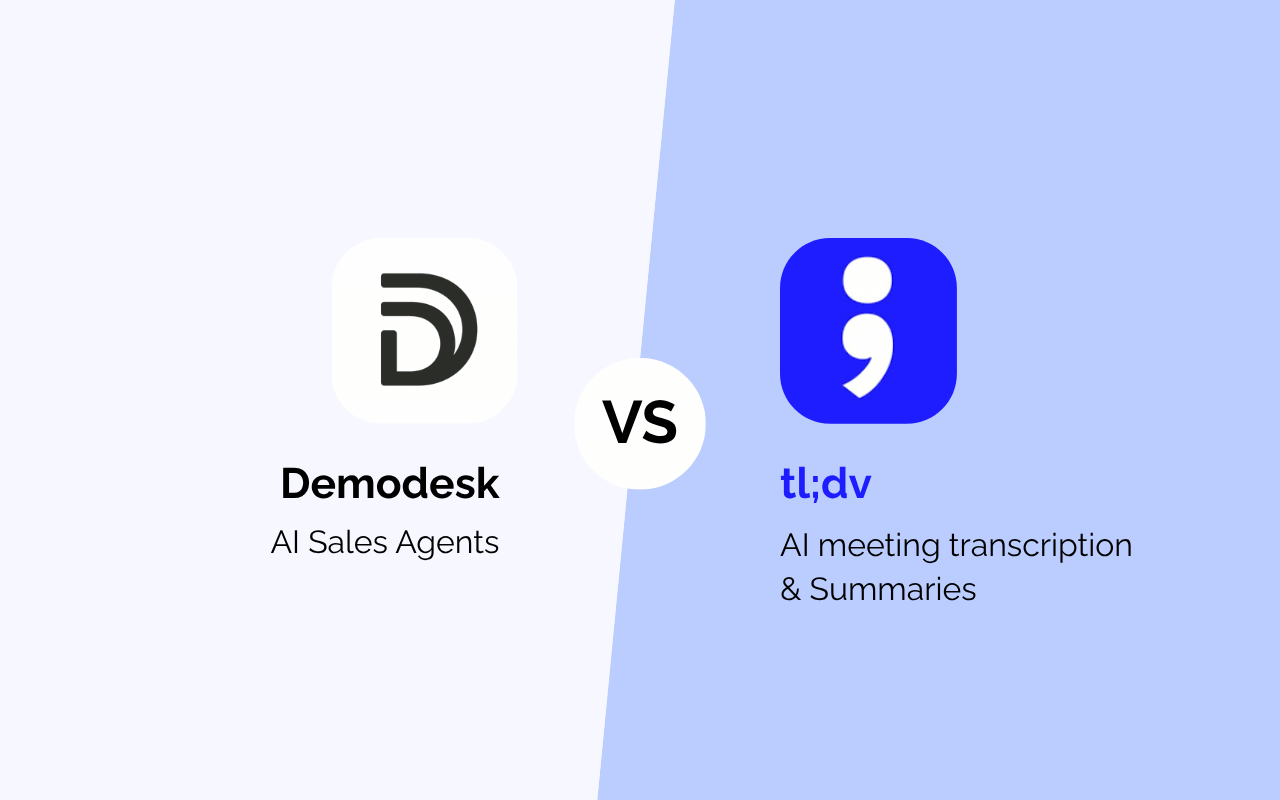Als B2B-Verkäufer haben Sie wahrscheinlich einen einzigartigen Verkaufsstil und Ihre eigene Methodik, die Sie im Laufe der Zeit entwickelt haben. Sie sind flexibel, daran gewöhnt, schnell zu denken, und Sie lieben es, Wege zu finden, um Kontakte zu knüpfen, die Probleme Ihrer Interessenten zu lösen und den Verkauf abzuschließen. Jetzt, wo Sie von zu Hause aus arbeiten, verspüren Sie wahrscheinlich den Druck, Ihren Verkaufsprozess an schaffe mehr Struktur für dich und dein Team.
Wenn Sie sich daran gewöhnt haben, Dinge auf Ihre eigene Art zu tun, sind Sie nicht allein. Laut der Objective Management Group, die fast eine Million Vertriebsmitarbeiter evaluiert und bewertet hat, 75-80% aller Vertriebsmitarbeiter folgen keinem formellen Verkaufsprozess. Dies kann jedoch ein kostspieliger Fehler sein. Die Umfrage von Harvard Business Review unter B2B-Unternehmen ergab, dass Teams mit einem klar definierten Verkaufsprozess über eine 18% Unterschied beim Umsatzwachstum verglichen mit denen, die es nicht getan haben.

Wir sind hier, um Ihnen zu sagen, dass ein formeller B2B-Verkaufsprozess weder zu befürchten noch zu vermeiden ist! Tatsächlich verfügen Sie, sobald Sie einen Standardprozess entwickelt haben, über die Grundlagen, um Ihre Abschlussraten zu optimieren und zu verbessern. Wie, fragen Sie sich vielleicht? Ja, wir wissen, dass es schwierig ist, Ihren Verkaufsprozess während der Umstellung auf Telearbeit, auch bekannt als Arbeit von zu Hause aus, konsistent zu halten. Aber wir sind hier, um Ihnen zu helfen, sich in diesem steinigen Terrain zurechtzufinden und Sie unabhängig von Ihrer Arbeitsumgebung auf einem kontinuierlichen Weg zu bewegen. Lass uns eintauchen!
Was ist einzigartig am B2B-Vertriebsprozess aus der Ferne?
Der B2B-SaaS-Vertrieb aus der Ferne unterscheidet sich von herkömmlichen Vertriebsansätzen. Der Verkauf von Cloud-basierter Software as a Service (SaaS) spiegelt häufig Vertriebsinnendienst, wo Sie in der Regel Verkäufe aus der Ferne akquisieren, pflegen und abschließen, ohne Ihren Käufer jemals persönlich zu treffen.
Neue Untersuchungen bestätigen, dass Kunden virtuell interagieren möchten und es vorziehen, keine Zeit mit persönlichen Besprechungen zu verschwenden fast 75% der Verkaufssituationen. Zusätzlich Tools für Online-Besprechungen ermöglichen dynamischere persönliche Gespräche und Demos per Video. Auf diese Weise können Sie eine persönlichere Verbindung zu Ihren Interessenten herstellen und ihnen genau zeigen, wie Ihr Produkt ihnen helfen wird.

Um Kunden effektiv zu informieren und das Produkt oder die Dienstleistung Ihres Unternehmens zu verkaufen, benötigen Sie einen gut durchdachten, schrittweisen Prozess, dem Ihr gesamtes Team folgen kann.
Wir haben dieses Playbook zur B2B-Vertriebsentwicklung entwickelt, um Ihnen dabei zu helfen, einen Ansatz zu entwickeln, der für Ihren Zielkunden geeignet ist, und wir zeigen Ihnen, wie Sie dies weiterhin tun können optimieren Sie Ihre Vertriebspipeline und Prozesse um den Umsatz zu steigern.
Weitere Informationen zu den unterschiedlichen SaaS-Vertriebsmodellen und den besten Möglichkeiten, Demos zu nutzen, um die Effizienz Ihres Teams zu optimieren, finden Sie unter“Warum Demos in B2B-SaaS wichtig sind“.
Definieren Sie Ihren B2B-Verkaufsprozess
Wenn Ihr SaaS-Modell transaktional oder unternehmensbezogen ist, ist es wichtig, einen klaren Verkaufsprozess zu definieren und zu implementieren, dem Ihr gesamtes Team folgt.
Unternehmen mit einem formellen Verkaufsprozess erzielen mehr Umsatz. Wenn Sie also Ihren Vertriebsmitarbeitern die Gelegenheit geben, ihn „unter die Lupe zu nehmen“, kann dies eine große verpasste Gelegenheit sein. Lassen Sie uns den Vertriebsprozess aufschlüsseln, um Ihnen einen Rahmen zu bieten, mit dem Sie Ihren eigenen Verkaufsprozess erstellen können, der Ihren Bedürfnissen entspricht.

Hier sind 6 wichtige Schritte des B2B-Verkaufsprozesses um dir den Einstieg zu erleichtern:
Schritt 1: Lead-Generierung und -Akquise
Hier finden Sie potenzielle Kunden und beurteilen, ob sie das, was Sie anbieten, benötigen und ob sie es sich leisten können. Bei B2B-Verkäufen können Leads aus dem Inbound-Marketing oder aus Ihrer Recherche stammen. Identifizieren Sie Ihre Zielgruppe und nutzen Sie Online-Ressourcen wie LinkedIn und andere Netzwerkseiten, um Ihre Interessentenliste zu erstellen.
Schritt 2: Qualifizierung
Sie haben Ihren Interessenten erreicht und jetzt ist es Ihr Ziel, sicherzustellen, dass er ein potenzieller Kunde ist. Fragen Sie nach ihren Geschäftszielen und den Herausforderungen, die sie bewältigen müssen. Wenn Sie nicht wissen, wo Sie anfangen sollen, versuchen Sie Folgendes BANT-Methodik um herauszufinden, ob Ihr Lead aufgrund seines Budgets, seiner internen Einkaufskompetenz, seiner Bedürfnisse und seines Kaufzeitplans gut zu Ihnen passt.
Schritt 3: Präsentieren
Es ist Demozeit: Die perfekte Gelegenheit für Sie, Ihren potenziellen Kunden zu zeigen, wie Ihr Produkt ihnen das Leben erheblich erleichtern wird, Zeit damit zu verbringen, zu reden und vor allem zuzuhören, was sie zu sagen haben.
Schritt 4: Umgang mit Einwänden
Wenn ein Interessent Bedenken äußert, bedeutet das, dass er interessiert ist! Wie du mit Einwänden umgehen kann über Erfolg oder Misserfolg des Verkaufs entscheiden. Sorgen Sie für eine positive Dynamik, indem Sie ihre Bedenken entweder vor Ort ansprechen (aus diesem Grund ist es wichtig, sich auf typische Einwände vorzubereiten) oder zu einem vereinbarten Zeitpunkt nach Ihrem Meeting oder Anruf. Stellen Sie immer sicher, dass Sie in ihre Situation einfühlsam reagieren.

Schritt 5: Schließen
Du hast es geschafft! Hier stimmen Sie den Verkaufsbedingungen zu und schließen die Transaktion mit Ihrem Kunden ab. Versuchen Sie, diesen Schritt Ihres Prozesses mit Vertragsvorlagen zu standardisieren (vorab von den Behörden genehmigt).
Schritt 6: Onboarding und Kundenbindung
Wenn der Verkauf abgeschlossen ist, ist Ihre Arbeit noch nicht erledigt. Bleiben Sie während des Onboardings mit Ihren neuen Kunden in Kontakt. Wenn sie mit Ihrer Lösung erfolgreich sind, pflegen Sie Ihre Beziehung weiter, um Wiederholungsgeschäfte und Empfehlungen zu vermeiden. Die Bindung bestehender Kunden ist sechs- bis siebenmal günstiger als die Gewinnung neuer Kunden. Dieser Schritt lohnt sich also auf jeden Fall.
Den Kreis schließen
Unabhängig davon, ob Sie den Verkauf erfolgreich abgeschlossen haben oder nicht, müssen Sie den Kreis schließen — das heißt, Sie reflektieren und messen Ihre Ergebnisse, um zukünftige Verkäufe zu optimieren. Feedback (Kundenprobleme, Einwände, Stolpersteine usw.) an das Marketing zu geben, ist eine Möglichkeit, Sie und Ihr Unternehmen auf Erfolgskurs zu bringen. Das Team kann eine organische Strategie entwickeln, die sich an den Bedürfnissen potenzieller Kunden orientiert. Dies kann zu qualifizierteren Leads für Sie führen.
Optimieren Sie Ihren Verkaufsprozess mithilfe eines Verkaufstrichters
Die Standardisierung und Einhaltung eines Verkaufsprozesses wird zur Umsatzsteigerung beitragen. Ihr nächstes Ziel sollte die Optimierung sein. Eine Technik zur Bewertung und Verbesserung Ihres Prozesses ist die Entwicklung einer Ein einfacher Verkaufstrichter, der den Weg des Kunden vom Marketing-Lead über den qualifizierten Vertriebs-Lead bis hin zum Kaufkunden zeigt.

Indem Sie Ihren Verkaufsprozess innerhalb des Funnels visualisieren und jedem Schritt Kennzahlen zuweisen, können Sie nachverfolgen, wo die Barrieren liegen, und notwendige Anpassungen vornehmen. So können Sie Ihre erstellen B2B-Verkaufstrichter in 5 Phasen.
Generierung von Leads
Das ist die Spitze des Trichters. Sie möchten die richtigen Interessenten identifizieren und das beste Leistungsangebot unterbreiten, um Interesse zu wecken. Generierung von Leads beinhaltet die Prospektion, kann aber auch erleichtert werden durch Inbound-Marketing, was beinhaltet, potenzielle Kunden (Marketing-Leads) auf Ihre Website zu bringen und sie schließlich zu kontaktieren, sobald Sie ihre Kontaktinformationen haben. Das bedeutet, dass Sie und Ihr Marketingteam auf derselben Seite sein müssen.
So optimieren Sie die Lead-Generierung: Stellen Sie sicher, dass Vertrieb und Marketing aufeinander abgestimmt sind
Anstatt bessere Leads von Ihrem Marketingteam zu fordern, arbeiten Sie mit ihnen zusammen, um Ihre Kundenprofil: An wen genau verkaufen Sie? Stellen Sie sicher, dass die Botschaft, die sie vermitteln, zu Ihrem Angebot passt und die wichtigsten Problembereiche behandelt. Integrieren Sie Marketingtechnologie (wie Marketo, Hubspot) mit Ihrem CRM-Kunden Daten fließen nahtlos durch Vertrieb und Marketing.
Qualifizierung leiten
Sie glauben, dass Ihr Produkt gut zu Ihrem Interessenten passt, aber Sie werden es nicht wirklich wissen, bis Sie mit ihm sprechen und seine spezifischen Herausforderungen und Bedürfnisse herausfinden. Möglicherweise möchten Sie das Gespräch per E-Mail beginnen, aber denken Sie daran, dass nur 23,9% der Verkaufs-E-Mails werden geöffnet und die durchschnittliche Person löscht 48% der E-Mails sie erhalten täglich.
Irgendwann MÜSSEN Sie Ihren Interessenten ans Telefon holen. Seien Sie bereit, diese Wählfinger zu benutzen (oder investieren Sie in Software für automatisches Wählen) weil es durchschnittlich dauert 18 Anrufe, um tatsächlich telefonisch mit einem Interessenten in Kontakt zu treten und die Rückrufraten liegen unter 1%.
So optimieren Sie die Lead-Qualifizierung: Führen Sie eine angemessene Verkaufsermittlung durch und verwalten Sie Ihre Zeit gut
Achten Sie bei qualifizierten Leads darauf, Discovery nicht zu überspringen. Vertriebsteams, die sich genug Zeit für Discovery nehmen, bevor ihre Demo gewinnt 73% häufiger als diejenigen, die es überspringen. Die Ziele der Discovery-Anruf sind für:
- Qualifizieren Sie sich für die Demo
- Schmerzpunkte verstehen
- Beziehung aufbauen
- Identifizieren Sie die richtige Zielgruppe
- Verkaufe die Demo

Zeitmanagement ist in dieser Phase von entscheidender Bedeutung. Wenn Sie per E-Mail mit einem Interessenten in Kontakt stehen, ihn aber nicht zu einem 15-minütigen Anruf überreden können, lassen Sie ihn gehen. Ihre Zeit wäre viel besser damit verbracht, Empfehlungen für Ihren spezifischen Zielkunden zu erhalten.
Sie fragen sich, wie viele Verkaufsgespräche Sie pro Tag tätigen sollten? Es werden zwar viele Zahlen herumgeworfen, aber der grundlegende Konsens ist 50 bis 60 Anrufe — und dazu gehören auch Rückrufe von Interessenten. Michael Pedone von SalesBuzz.com erinnert die Vertriebsmitarbeiter daran, sich auf das zu konzentrieren Qualität der Gespräche ebenso. Wenn Sie durch Ihre Anrufe Kontakte knüpfen, interagieren und lernen, sind Sie definitiv auf dem richtigen Weg.
Produktverkaufsdemo
Das bezieht sich auf Terminplanung und präsentiere deine Demo. Die Demo ist auch der beste Zeitpunkt, um alle Fragen oder Einwände zu beantworten, die Ihnen helfen könnten, einen Verkauf abzuschließen. Die Demo ist zwar das Hauptereignis, damit Ihr potenzieller Kunde sieht, wie Sie seine geschäftlichen Probleme lösen können, aber ignorieren Sie auch andere kleine Interaktionen nicht, einschließlich der Vereinbarung von Die nächsten Schritte und sende eine Folge-E-Mail wo Sie die Gelegenheit nutzen können, um den Verkauf voranzutreiben.
So optimieren Sie die Produktdemo: Verwenden Sie die richtigen Online-Tools, um den Prozess zu optimieren und menschliche Verbindungen herzustellen
Sie müssen Vertrauen aufbauen und eine ansprechende Demo. EIN Tool zum Teilen von Bildschirmen ermöglicht es Ihnen, die Demo zu planen, ein persönliches Demo-Erlebnis zu bieten und Ihre Folge-E-Mails zu senden. Indem Sie den gesamten Verkaufsprozess in einem Tool zentralisieren, können Sie jede Interaktion verfolgen und Ihre Schwachstellen finden.

Kaufentscheidung
Dies ist die Zeit, in der sich Ihr Interessent für den Kauf entscheidet. Wenn Sie während des gesamten Prozesses eine starke Beziehung aufgebaut, sie angemessen qualifiziert und eine effektive Demo geliefert haben, sollte der endgültige Kauf reibungslos verlaufen.
So optimieren Sie die Kaufentscheidung: Setzen Sie frühzeitig Erwartungen
Es gibt keinen Zauberstab, mit dem Sie den Verkauf schneller abschließen können. Wenn der Verkauf zu diesem Zeitpunkt auf eine Hürde stößt, bedeutet das, dass Sie zu Beginn des Verkaufstrichters etwas verpasst haben. Um einen reibungslosen Abschluss zu gewährleisten, stellen Sie sicher, dass Sie:
- Ihr Budget wurde während des Qualifyings bestätigt
- Präsentierte die Demo den Entscheidungsträgern
- Alle ihre noch offenen Einwände wurden nach der Demo behoben
Erfolg unserer Kunden

Sobald Ihr Interessent den Vertrag unterschreibt, fängt Ihr Job gerade erst an. Die meisten SaaS-Angebote basieren auf jährlichen oder sogar monatlichen Verträgen, und die Wechselkosten sind gering. Langfristige SaaS-Kunden sind das Ergebnis exzellenter Onboarding- und Kundenbetreuung. Wenn Sie diese richtig verstehen, können Sie Ihre Kunden in Empfehlungsmaschinen verwandeln.
So optimieren Sie den Kundenerfolg: Machen Sie Ihre Kunden zu Botschaftern
Du wirst sie dazu bringen, dich zu loben, wenn du:
- Messen Sie das Onboarding-Engagement, um sicherzustellen, dass es nützlich ist und einen Mehrwert bietet.
- Bieten Sie großartigen Support und verfolgen Sie die Zufriedenheit mit einem NPS-Umfrage.
- Pflegen Sie nach dem Verkauf eine starke Beziehung, um sie zu pflegen Möglichkeiten zur Kundenempfehlung. Messen Sie jede Phase des Vertriebstrichters
Peter Drucker sagte bekanntermaßen: „Wenn du es nicht messen kannst, kannst du es nicht verbessern.“ Die Messung Ihres Funnels beginnt mit Daten, und Daten werden mithilfe von Online-Verkaufstools generiert.
Die heutigen B2B-Vertriebsmitarbeiter beschäftigen in der Regel mindestens fünf verschiedene Verkaufstools während des gesamten Verkaufsprozesses, einschließlich, aber nicht beschränkt auf:
- CRM (Beispiel-KPI: Kundenbindungs- und Abwanderungsraten)
- Daten- und Listendienste (Beispiel-KPI: Kosten pro Lead)
- Soziale Kundengewinnung (Beispiel-KPI: Kosten pro MQL)
- Verkaufsrhythmus (Beispiel-KPI: Länge des Verkaufszyklus)
- Plattform für B2B-Verkaufsgespräche (Beispiel-KPI: Demo-Konvertierung)
Entscheiden Sie anhand der Tools, die Ihr Team verwendet, welche Leistungskennzahlen (KPIs) Ihnen bei der Bewertung der einzelnen Schritte helfen. Es stehen mehrere Verkaufsmetriken zur Auswahl. Finden Sie also diejenigen heraus, die für Sie am besten geeignet sind. Hier ist ein umfassende Liste der Vertriebs-KPIs.

Stellen Sie das richtige Team für Ihren B2B-Verkaufsprozess zusammen
Der von Ihnen definierte Verkaufsprozess sollte Ihnen und Ihrem Team nicht nur bei der Arbeit von zu Hause aus helfen, sondern auch beim Übergang in ein normales Arbeitsumfeld. Mit einem klaren B2B-Vertriebsmethodik aus der Ferne und einen Kundentrichter, der Sie bei der Bewertung und Optimierung Ihres Verkaufsprozesses unterstützt, sind Sie auf dem besten Weg, Ihre Abschlussraten zu verbessern und Ihren Umsatz zu steigern, auch wenn sich die Umstände geändert haben.
wenn (window.strchfSettings === undefiniert) window.strchfSettings = {};
window.strchfSettings.stats = {url: "https://demodesk.storychief.io/en/inside-sales7777optimize-inside-sales-process?id=161982870&type=26",title: „Vertriebsprozessoptimierung für die Arbeit aus der Ferne“, id: „5b8f442a-7def-42c8-b6a8-c55e95348482"};
(Funktion (d, s, id) {
var js, sjs = d.getElementsByTagName (s) [0];
if (d.getElementById (id)) {window.strchf.update (); return;}
js = d.createElement (e); js.id = id;
js.src = "https://d37oebn0w9ir6a.cloudfront.net/scripts/v0/strchf.js „;
js.async = wahr;
sjs.parentNode.insertBefore (js, sjs);
} (Dokument, 'Skript', 'storychief-jssdk'))





%201.avif)







